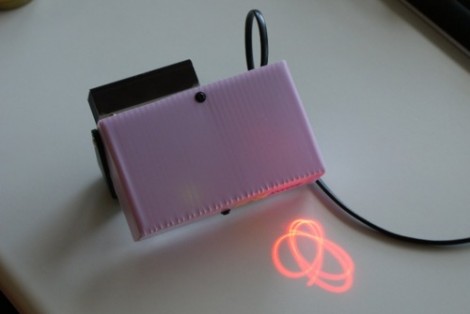
In a project that only spanned about three weeks [Lars] built this laser light show projector using parts scavenged from his junk bin. We’ve seen the concept many times before, all you need is a laser source and two mirrors mounted on a spinning bases. The laser diode for this project was pulled from a recordable DVD player. That beam passes through the optics from a laser printer to give it the focus necessary to get a good projected image.
[Lars] played around with the mirror angles until he achieved just the right look. The first mirror is mounted about 4 degrees from being flat with its motorized base; the second is off by about 6 degrees. This introduces slight oscillation in the beam direction when the motors are spinning. By adjusting the speed of each motor you get different patterns. Adjustments are happening completely at random thanks to the BasicStamp2 microcontroller which hadn’t been used in years. Fifteen lines of code were all it took.
Want a laser that’s not controlled at random? Check out this addressable galvanometer-based show.














I like the way how he made the housing, he also should have done a video to show it working.
Harvest optics from a broken PS3 module, attach 445nm 200mW diode and it should do two colours.
For very low power versions the existing PS3 diode is capable of alternating red/blue output so this simplifies the optics a lot.
Thanks for the tip! but how do I make it alternate?
Was looking to buy a barcode reader that uses a similar style of concept. They’re fairly expensive – or broken – so may go for a ‘standard’ CCD.
Anyone had any experience of working with those?
@Dug,
right… those spinning mirror barcode readers are very expensive – especially when they’re not broken.
CCD readers (aka imagers) can work very well, but with a more limited field of view and a much more limited depth of field. If it’s for a handheld reader or the barcodes are up close and in the same place everytime, they’re fine.
The hardest thing about building one of these is mounting the mirrors to the motor shaft.
I made mine using a couple of computer fans I had in my junk bin. The advantage of these is that they have a nice flat surface on the motor hub that mirrors can be glued to.